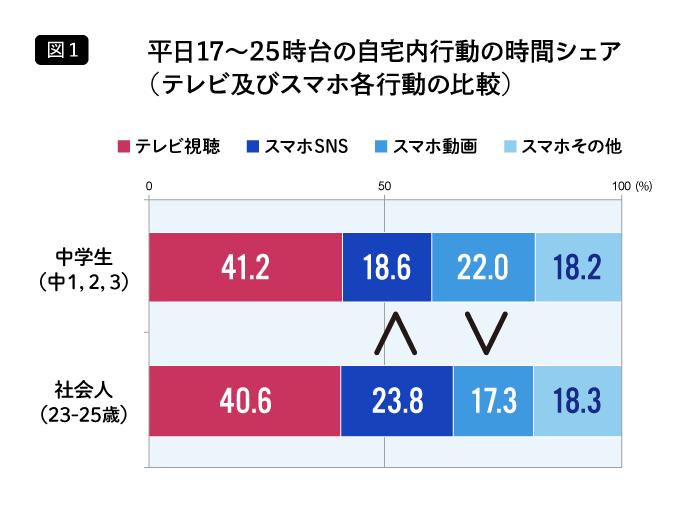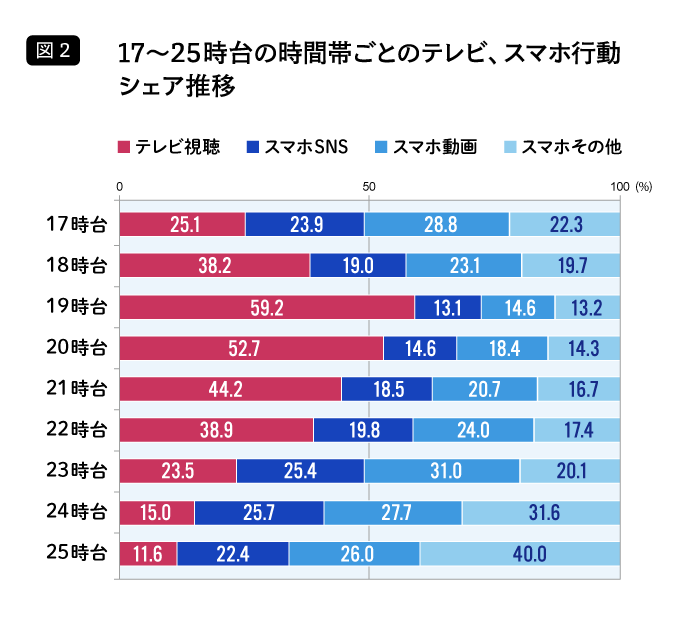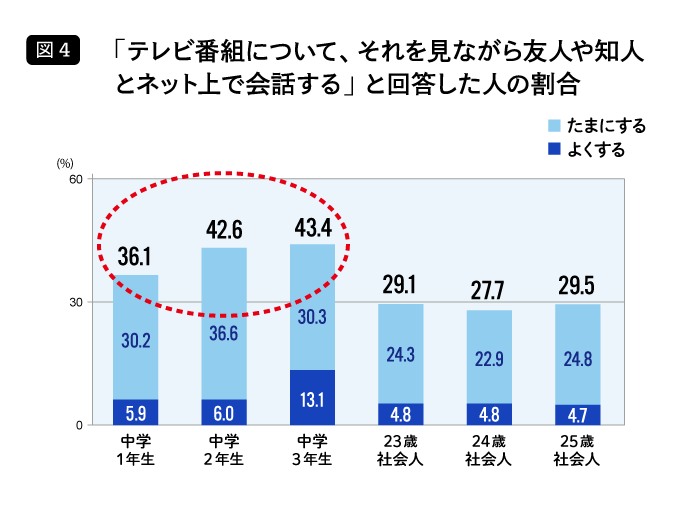By the way...
We often see surveys on media trends among high school students and above, but aren't studies on "junior high school students" surprisingly scarce?
Dentsu Inc. Media Innovation Lab, in collaboration with Professor Yoshiaki Hashimoto of the University of Tokyo, continues research on media exposure and information behavior among younger demographics (Reference: Web Dentsu News article "The Era of 'Smartphones from Birth'" ). This time, through this industry-academia collaboration, we introduce findings on "junior high school students," a group that has received relatively little spotlight until now.
In July 2019, we conducted a survey (hereinafter referred to as this survey) focusing on weekday evenings after school, aiming to understand the off-time activities of junior high school students who use smartphones (hereinafter referred to as "smartphone-using junior high students"). Incidentally, according to Dentsu Inc.'s database "d-campX (2019)," 70% of junior high school students already own smartphones. To provide a comparative baseline, we posed the same questions to their seniors, 10 years their senior (working adults aged 23-25; hereinafter referred to as "working adults").
This time, we would like to introduce noteworthy findings, focusing on their media consumption, particularly their relationship with television. This survey examined home activities after returning home on two weekdays, from 5:00 PM to 1:00 AM (or after the final return home if they left again for activities like cram school).
Smartphone usage time surpasses TV!
First, regarding what smartphone-using middle schoolers "most frequently do on their smartphones." The most common activity after returning home was "using LINE" (89.4%), followed by "watching YouTube" (84.6%) and "playing games" (62.9%).
Now, please look at [Figure 1]. This shows the share of each media activity (① TV viewing, ② smartphone SNS use, ③ smartphone video use, ④ other smartphone use) when calculating the total minutes spent from 5 PM to 1 AM and summing them to 100%.

Roughly speaking, the time spent on TV accounts for about 40% of the total, while smartphone-related activities account for 60%. This reveals that middle school students spend more time on their smartphones than on TV during their off-time on weekdays. (*)
Comparing this to working adults, the latter have a higher proportion of time spent on SNS than junior high students, while junior high students spend a larger proportion of time watching videos than working adults. This may be because after entering the workforce, people become busier and find it relatively difficult to carve out time to leisurely watch videos on weekdays, while their need for social communication increases, leading to greater SNS usage.
*While simultaneous TV and smartphone use or multitasking within smartphones may occur, this analysis does not account for overlapping time.
TV still holds significant presence, especially during dinner hours
Junior high students now spend more time on smartphones than watching TV. However, according to Professor Hashimoto of the University of Tokyo, who collaborated on this research, television still holds significant presence, particularly during dinner time. Quoting Professor Hashimoto's comments:
[Figure 2] shows the shift in the share of television and smartphone usage among all junior high school students by time slot, from 5:00 PM to 1:00 AM. According to this, television's share exceeds 50% and surpasses smartphone usage time, particularly between 7:00 PM and 8:00 PM (however, no adjustments were made for multitasking). While it's true that middle schoolers are increasingly turning away from television, it's clear that between 7:00 PM and 9:00 PM, television remains central to their information-seeking activities. This is further supported by the time-of-day contact rate trends shown in the subsequent [Figure 3].
Now, regarding another question in this survey: 44.9% of junior high students answered "applies" to the statement "I almost always watch my favorite TV programs live in front of the TV." This score is approximately 10 percentage points higher than that of working adults (35.3%).
So, what kind of programs do junior high students watch? When asked to select only one most frequently watched program genre, "Comedy Variety Shows" ranked first (29.7%). Second place was "Dramas" (20.8%), and third was "Anime" (17.8%).
Regarding other content preference findings, junior high students tend to favor content with quick punchlines or resolutions (referred to by the research team as "gag-based"), while working adults often prefer content that develops its story gradually (referred to as "story-based").
Relationship Between SNS Use and Television
See [Figure 4]. This shows the percentage of respondents who answered "often" or "sometimes" to the item "Do you chat online with friends or acquaintances while watching TV programs?" The percentage of junior high school students who chat online about TV topics is higher than that of working adults 10 years their senior.
Furthermore, a correlation analysis comparing individual sample values for TV viewing time and SNS usage time detected a positive correlation (significant at a 1% significance level). That is, people who use SNS longer tend to watch TV longer.
These data suggest an affinity between SNS and television, and the possibility that SNS behavior may be energizing television viewing—a fascinating finding. During their free time, engaging in fun exchanges on SNS while watching TV, such as "This is crazy! ♡" or "No way! (lol)," might be fueling junior high students' energy for television viewing.
<Survey Overview>
Survey Period: Tuesday, July 16, 2019 – Friday, July 19, 2019
Survey Method: Internet survey (via smartphone)
Participants: Junior high school students and working adults, total 1,501 individuals
Recruitment Method: Junior high school students were recruited via their parents.







